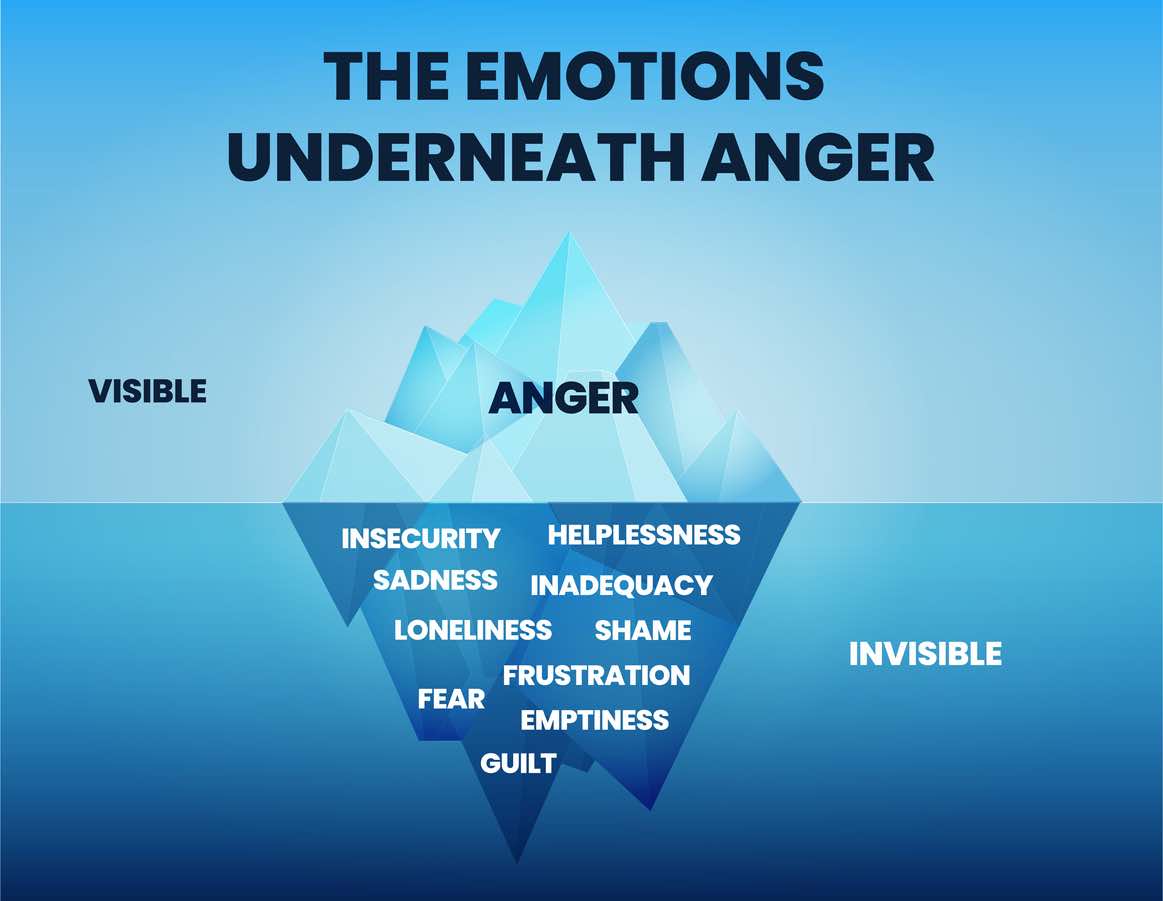- Have any questions
- Info@Ratedtherapy.com
The Anger Iceberg

Trouble Sleeping
January 7, 2023
Countering Negative Thoughts
January 7, 2023The anger iceberg is a metaphor that can be helpful in understanding and managing anger. It suggests that there are different levels of anger, with the visible or surface level representing the tip of the iceberg and the underlying or hidden causes of anger representing the larger, submerged part of the iceberg.
To use the anger iceberg to help manage anger, try the following steps:
- Identify the trigger: When you feel angry, try to identify what triggered the emotion. Was it a specific event or situation? Understanding the trigger can help you identify the surface level of the anger iceberg.
- Reflect on your emotions: Take a moment to reflect on your emotions and try to identify the deeper, underlying causes of your anger. Are you feeling hurt, afraid, insecure, or frustrated? Recognizing these emotions can help you understand the larger, submerged part of the anger iceberg.
- Practice healthy coping strategies: Once you have identified the trigger and underlying causes of your anger, try using healthy coping strategies to manage your emotions. These may include taking deep breaths, counting to ten, or engaging in physical activity. See article on Coping strategies for managing anger HERE
- Seek support: If you are struggling to manage your anger on your own, consider seeking support from a trusted friend, family member, or therapist. Talking through your emotions and experiences with a supportive person can help you better understand and manage your anger.



